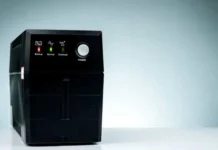While barcode technology is quite new, it has become an important business and logistics tool. For instance, UPC codes and other similar barcodes have been a fixture of grocery stores for decades.
Businesses use other types of barcode technology as well, such as RFID. Other types of barcodes are older, including QR codes.
2D barcodes are finding more and more uses all the time, though. This article is for you if you need information on what is a 2D barcode and how they work.
What Is a 2D Barcode?
A 2D barcode, also known as a two-dimensional barcode, is a type of barcode that can store more information compared to traditional linear barcodes. Unlike linear barcodes representing data horizontally in a series of bars, 2D barcodes encode information horizontally and vertically, allowing them to store significantly more data.
2D barcodes are made up of a grid of square or rectangular modules, and the information is encoded within the arrangement and pattern of these modules. The modules can be black and white squares, dots, hexagons, or other shapes, depending on the specific type of 2D barcode.
How Does 2D Barcode Work?
If the concept of a 2D barcode still needs to be clarified, you should check its features. Here’s a general overview of how it works:
Encoding Data
The data to be stored, such as text, numbers, or binary data, is converted into a machine-readable format using encoding schemes specific to the type of 2D barcode being used. Examples of common 2D barcode types include QR codes and Data Matrix codes.
Structuring the Barcode
The encoded data is organized into a two-dimensional grid pattern. Each cell within the grid represents a binary digit (bit) or a group of bits, depending on the barcode type and encoding scheme used. The grid can vary in size, from small squares to larger patterns.
Error Correction
To enhance reliability and error tolerance, two-dimensional barcodes often incorporate error correction techniques. These techniques allow the barcode to withstand damage or distortion during barcode scanning or printing.
Printing or Display
Once the barcode is generated, it can be printed on a physical surface, such as product packaging, labels, or tickets. Alternatively, it can be displayed on electronic screens like computer monitors, smartphones, or tablets.
Scanning and Decoding
To read a 2D barcode, a specialized barcode scanner or a mobile device with a built-in camera is used. The scanner captures an image of the barcode. Then specialized software such as the popular ZXing decoder analyzes the image to decode the encoded data, applying error correction algorithms if necessary.
Data Retrieval and Processing
Once the encoded data is successfully decoded, it can be processed according to its intended purpose. For example, in the case of a QR code, the decoded data might include a website URL, contact information, or product details. The scanning device or software can use this information to trigger specific actions, such as opening a website, adding a contact to the address book, or retrieving product information from a database.
Unraveling the Code
What is a 2D barcode? 2D barcodes are a great tool for quickly and securely storing and transferring data without having to type information manually. They offer businesses far more advantages and security than traditional barcodes.
For businesses looking for a reliable and secure way to store and transfer data, a 2D barcode may be the answer. Try 2D barcodes today for your business’s data storage and transfer needs.
We hope this article was useful to you. If you enjoyed it, make sure to check out our blog for more informative content.

































